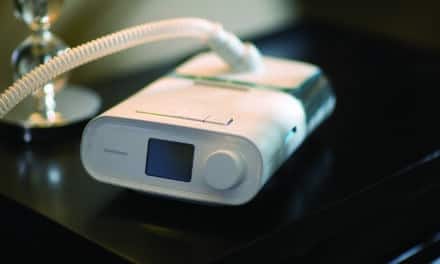
“This study, for the first time, shows that the use of regional anesthesia improves outcomes in patients with sleep apnea undergoing total joint arthroplasty. Although requiring further investigation, there is no reason to think that these results could not be extrapolated to other types of surgery,” said Stavros Memtsoudis, MD, PhD, director of Critical Care Services at the Hospital for Special Surgery, New York City, who led the study.
Specifically, the researchers studied neuraxial anesthesia, one type of regional anesthesia. Neuraxial anesthesia involves injecting medication into fatty tissue that surrounds the nerve roots in the spine (known as an epidural) or into the cerebrospinal fluid that surrounds the spinal cord.
To investigate whether neuraxial anesthesia actually reduced complications, researchers at the Hospital for Special Surgery conducted a retrospective review of all hip and knee replacements performed in patients with sleep apnea between 2006 and 2010 in the United States using Premier Perspective. This administrative database contains discharge information from approximately 400 acute care hospitals located throughout the United States. The researchers identified 30,024 patients with sleep apnea undergoing these procedures whose medical records included information on the type of anesthesia used during the surgery. Approximately 11% of cases were performed under neuraxial, 15% under combined neuraxial/general, and 74% under general anesthesia alone.
Currently, the majority of joint replacements in the United States are performed under general anesthesia, but HSS uses neuraxial anesthesia for 95% of orthopedic surgeries.
The researchers discovered that patients had a 17% lower risk of major complications if neuraxial anesthesia was used rather than general anesthesia. Patients who received combined neuraxial/general anesthesia had a 10% lower risk of major complications compared with patients who received general anesthesia. When neuraxial methods were used, patients had lower rates of pulmonary, gastrointestinal, and infectious complications, and, in particular, acute renal failure. Use of the neuraxial approach (whether used alone or in combination with general) also reduced the use of transfusions, mechanical ventilation, and critical care services. The median length of hospitalization was 2.8 days in the general anesthesia group and 2.6 days in the neuraxial and neuraxial/general combined groups.
“We wanted to know if regional anesthesia really makes a difference in this patient population and it seems to be doing that,” said Dr Memtsoudis. “Neuraxial anesthesia was associated with lower risk of complications and a decrease in the length of stay in the hospital.”
The researchers say the results may apply to patients with sleep apnea undergoing surgeries such as prostatectomies and hysterectomies, and this is an area currently being investigated.





